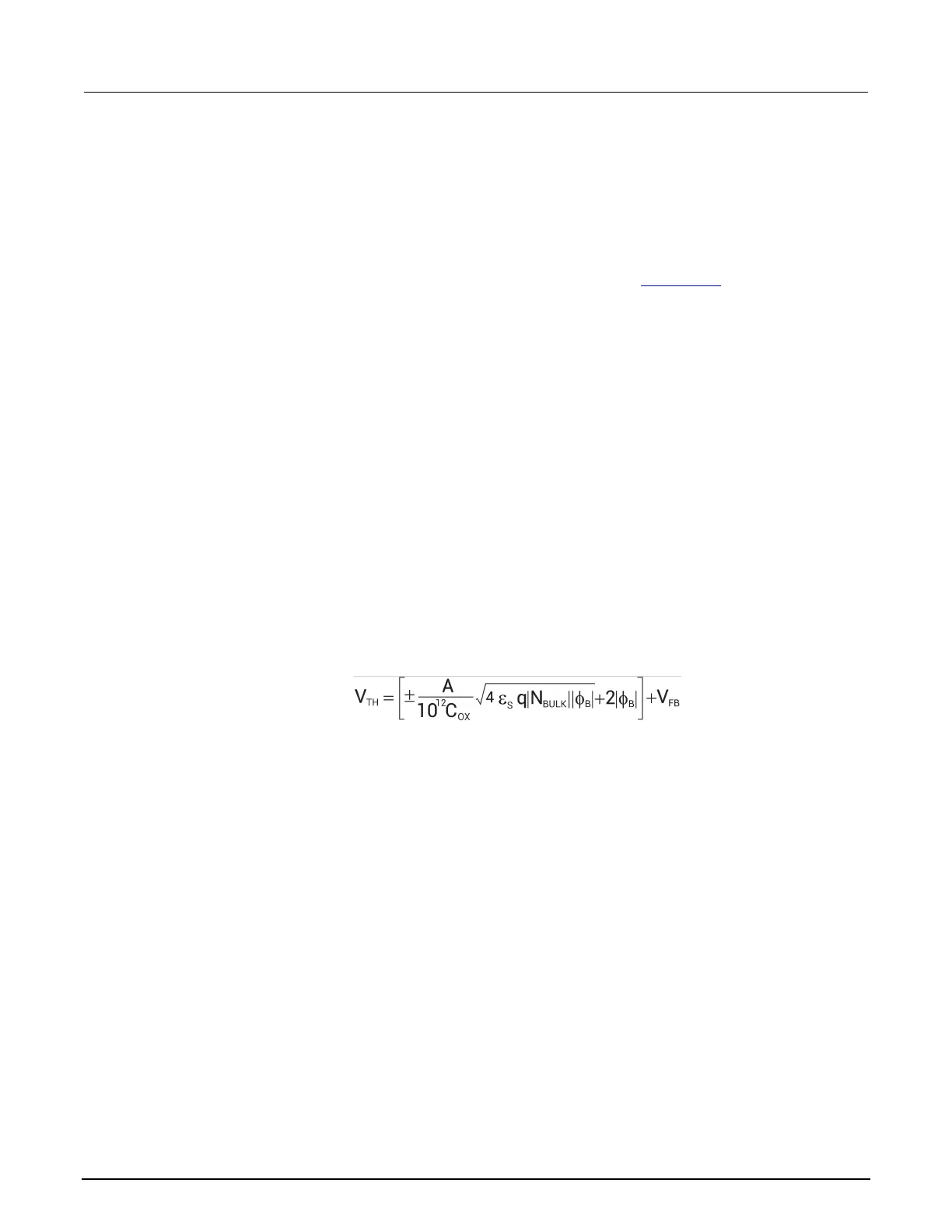4: Multi-frequency capacitance-voltage unit Model 4200A-SCS Parameter Analyzer
4-60 4200A-901-01 Rev. C / February 2017
Where:
• λ = extrinsic Debye length
• ε
s
= permittivity of the substrate material (F/cm)
• kT = thermal energy at room temperature (293 K) (4.046 x 10
-21
J)
• q = electron charge (1.60219 x 10
-19
C)
• Nx = N at 90% W
MAX
or N90W (refer to Nicollian and Brews; see References (on page 4-63)) or,
when input by the user, N
X
= N
A
or N
X
= N
D
• 1 x E
-2
= units conversion from cm to m
The extrinsic Debye length is an idea borrowed from plasma physics. In semiconductors, majority
carriers can move freely. The motion is similar to a plasma. Any electrical interaction has a limited
range. The Debye length is used to represent this interaction range. Essentially, the Debye length
indicates how far an electrical event can be sensed within a semiconductor.
Threshold voltage
The turn-on region for a MOSFET corresponds to the inversion region on its C-V plot. When a
MOSFET is turned on, the channel formed corresponds to strong generation of inversion charges. It
is these inversion charges that conduct current. When a source and drain are added to a MOS
capacitor to form a MOSFET, a p-type MOS capacitor becomes an n-type MOSFET, also called an n-
channel MOSFET. Conversely, an n-type MOS capacitor becomes a p-channel MOSFET.
The threshold voltage, V
TH
, is the point on the C-V curve where the surface potential ψ
S
, equals twice
the bulk potential, φ
B
. This point on the curve corresponds to the onset of strong inversion. For an
enhancement mode MOSFET, V
TH
corresponds to the point where the device begins to conduct.
V
TH
is calculated as follows:
Where:
• V
TH
= threshold voltage (V)
• A = gate area (cm
2
)
• C
OX
= oxide capacitance (pF)
• 10
12
= units multiplier
• ε
S
= permittivity of substrate material
• q = electron charge (1.60219 × 10
-19
coulombs)
• N
BULK
= bulk doping (cm
-3
)
• φ
B
= bulk potential (V)
• V
FB
= flatband voltage (V)
The physical meaning of the threshold voltage is the same for both a MOS capacitor C-V curve and a
MOSFET I-V curve. However, in practice, the numeric V
TH
value for a MOSFET may be slightly
different, due to the particular method used to extract the threshold voltage.

